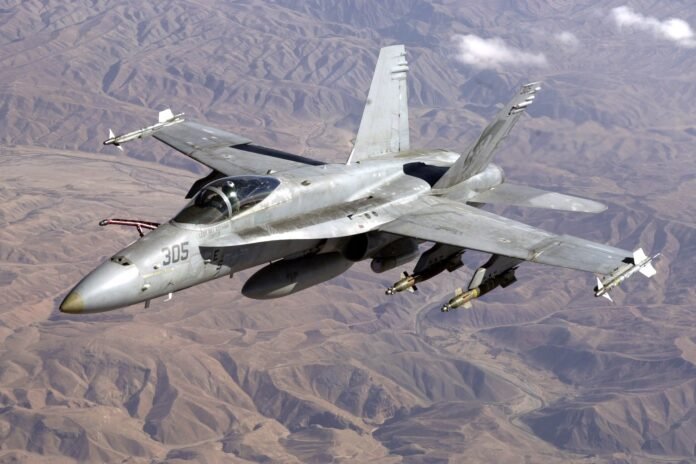Tensions in East Asia escalated recently as Japan scrambled fighter jets in response to an alleged violation of its airspace by Chinese military aircraft. The incident, which occurred near the disputed Senkaku Islands in the East China Sea, has reignited concerns over the growing frequency of such encounters between the two regional powers. The Japanese government has lodged a formal protest with Beijing, accusing China of breaching international norms and endangering regional stability.
The latest violation is part of a broader pattern of increased Chinese military activity near Japan’s territorial waters and airspace. Japan’s Ministry of Defense reported that Chinese aircraft, including surveillance planes and fighter jets, entered Japanese airspace without prior notice. This prompted Japan’s Air Self-Defense Force (ASDF) to respond by launching its own fighter jets to intercept the intruding aircraft and escort them out of the airspace.
Japanese officials described the violation as a serious breach of the nation’s sovereignty. According to Japan’s Defense Ministry, the Chinese aircraft came dangerously close to the Senkaku Islands, an uninhabited chain of islets that Japan controls but China claims as its own, referring to them as the Diaoyu Islands. This area has long been a flashpoint for diplomatic and military tensions between Tokyo and Beijing, with both sides regularly accusing the other of encroachment and aggression.
The Japanese government swiftly condemned the incident, with Defense Minister Minoru Kihara calling it a “provocative and dangerous act” that undermines peace and security in the region. Kihara also emphasized that Japan would not tolerate any violation of its territorial sovereignty and warned China to respect international laws governing airspace and maritime borders. He assured the public that Japan’s ASDF remains on high alert to respond to any future provocations.
Prime Minister Fumio Kishida reiterated the government’s position, stating that the protection of Japan’s territorial integrity is of the utmost importance. Kishida expressed concern that such incidents could escalate into more serious military confrontations and urged Beijing to engage in dialogue rather than resorting to aggressive maneuvers. “Japan will continue to defend its territory with vigilance and strength,” he said, “but we hope for peaceful resolutions to our disputes through diplomatic channels.”
The Chinese government, however, has dismissed Japan’s protests, claiming that the aircraft in question were conducting “routine patrols” in what it considers Chinese airspace. A spokesperson for China’s Ministry of Foreign Affairs accused Japan of overreacting and inflaming tensions. “The Diaoyu Islands are part of China’s inherent territory,” the spokesperson said. “Chinese military operations in the area are legitimate and necessary to safeguard national sovereignty.”
China’s assertive posture has become a common feature in its interactions with neighboring countries, particularly regarding territorial disputes in the East and South China Seas. Beijing has steadily increased its military presence in the region, conducting naval patrols, deploying aircraft, and building artificial islands to assert its claims. Japan, alongside other regional powers like South Korea and Taiwan, has grown increasingly alarmed by these actions, viewing them as part of China’s broader strategy to challenge the post-World War II international order in Asia.
The United States, a key ally of Japan and a major player in the region, has also expressed concern over the incident. A spokesperson for the U.S. Department of State called China’s airspace violation “troubling” and affirmed America’s commitment to defending Japan under the terms of the U.S.-Japan security alliance. The U.S. military regularly conducts joint exercises with Japan’s Self-Defense Forces and maintains a significant military presence in the region, with bases located in Okinawa and other parts of Japan.
Experts believe that the incident could lead to further deterioration in relations between Japan and China, which have been strained by historical grievances, territorial disputes, and competing visions for regional leadership. The situation is further complicated by the ongoing rivalry between China and the United States, which has drawn Japan closer to Washington in its efforts to counterbalance Beijing’s influence in the Indo-Pacific.
While the risk of an outright military conflict remains low, analysts warn that continued incidents like these increase the chances of an accidental clash that could spiral out of control. Both Japan and China have highly advanced military capabilities, and any miscalculation could have serious consequences for the region and beyond.
In response to the latest incident, Japan’s defense authorities have vowed to strengthen their air and maritime surveillance capabilities, including the potential deployment of more advanced radar systems and early-warning aircraft. Japan has also indicated its intention to deepen defense cooperation with its allies, particularly the United States and Australia, to ensure regional stability.
The airspace violation near the Senkaku Islands underscores the fragile nature of security in the East China Sea, where geopolitical competition and nationalistic fervor continue to drive tensions. As Japan and China navigate this delicate balance, the international community will be watching closely, hoping that diplomatic efforts can prevent further escalation in one of the world’s most volatile regions.

